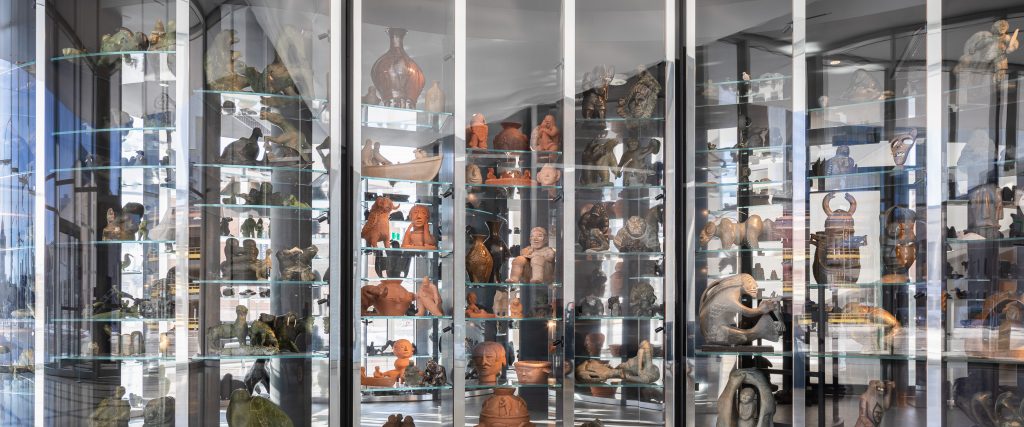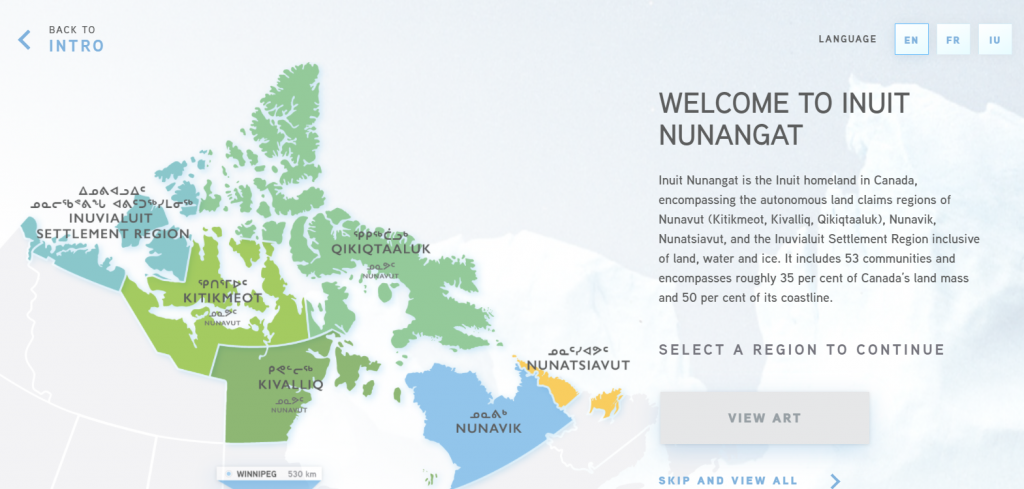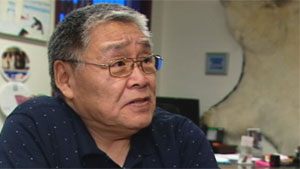Winnipeg Art Gallery (WAG)-Qaumajuq in Canada launches interactive digital platform for Inuit carvings

An interactive digital platform launched by the Winnipeg Art Gallery (WAG)-Qaumajuq offers anyone the chance to get up close with some of the most important Inuit carvings from across Canada, says the museum’s Head of Learning & Programs.
“We’re celebrating the diversity and resilience of Inuit art and artists from across the country,” Rachel Baerg, said in a telephone interview.
“We want to celebrate and inspire and get people thinking beyond just the carving they’re looking at, but also to understand the context, the culture, the community, the stories and the legends.”
The three-story visible vault is one of the unique features of the WAG-Qaumajuq. Forty-five hundred carvings are currently displayed on its 492 shelves.
The Visible Vault interactive digital platform launched on July 22 in English, Inuktitut and French featuring 150 key pieces from the collection.
Works by John Tiktak, Davidialuk Alasua Amittu, Oviloo Tunnillie, John Pangnark, Lucy Tutsweetok Tasseor, Judas Ullulaq, John Kavik, and Abraham Anghik Ruben are among the featured carvings.
Exploring the diversity of Inuit art in Canada
The platform allows visitors to take a 360 degree tour of the vault as well as listen to audio clips, watch videos, and learn more about the artists and where they come from.
“In the past, at many museums and galleries, it’s been non-Indigenous curators speaking to the importance of works,” Baerg said.
“So we really wanted to highlight the perspectives of as many different Inuit knowledge keepers, artists, curators, performers and elders as possible. We captured all kinds of audio and video clips, so those are like little art stories that we add for each of the key pieces and that allows us to bring a lot of voices to the table which is just a whole new way of exploring a work.”

Picking the pieces for the platform launch took place over several months. The project was headed by Inuk curator Maxine Anguk and involved the museum’s educational and curatorial teams as well as the museum’s Indigenous advisory circle.
The goal was to launch with pieces that represented the diversity of Inuit carving from different geographical regions and periods, to materials and subject.
“We wanted this to be almost like a visual encyclopedia, mapping the art and how it’s developed from the early 1950s to now,” Baerg said.
Phase Two to be launched on-site in September
The project team also looked for ways to educate visitors about different aspects of Inuit carving, including the nuances of the stone used.
“When you walk through the vault, you’re literally walking through the different geographical regions of the North,” Baerg said. “You can actually see the change in stone colour, as well as how the techniques change, as different types of artists work with different types of stone.”
“With the online platform, we actually have an article that talks all about the different stones and how they’ve been quarried in different regions of the North. Things like that are part of what makes the platform such a great window for people to better understand these works.”

Phase Two of the project is expected to launched in the museum in September, and will allow visitors to access information about all 4,500 carvings on a virtual, on-site only platform.
The Visible Vault interactive digital platform can be accessed here in all three languages.
Write to Eilís at eilis.quinn@cbc.ca
Related stories from around the North:
Canada: 2022 Arctic Arts Summit to be hosted in Canada’s Yukon territory, Eye on the Arctic
Finland: How not to promote Arctic tourism: Why Finland’s Sami say marketing their region needs to change, Eye on the Arctic
Norway: Norwegian slow TV to feature Svalbard round the clock for nine days, The Independent Barents Observer
Russia: Russia adds ancient sites along Norway’s border to cultural heritage list, The Independent Barents Observer
Sweden: Sweden, Norway team up to preserve ancient rock carvings, Radio Sweden
United States: American cartoonist says his new book on Canadian Indigenous history helped decolonize part of himself, CBC News



